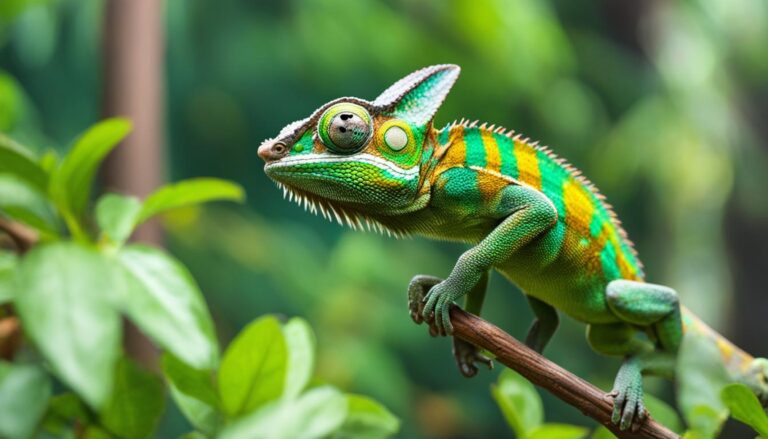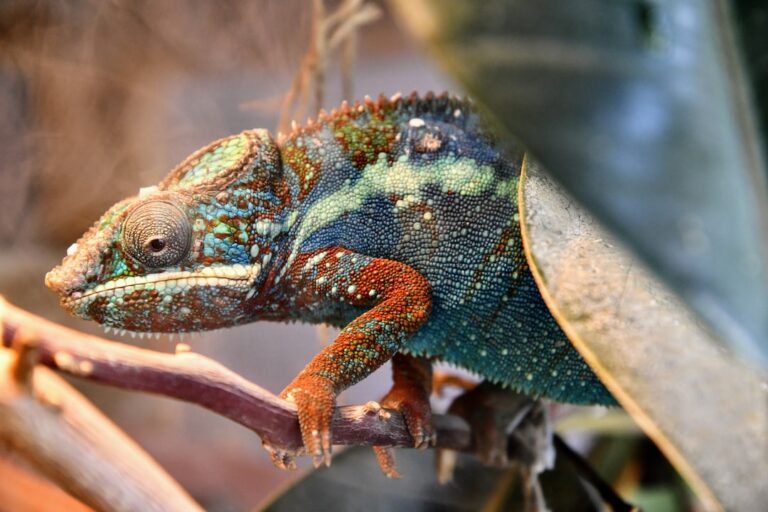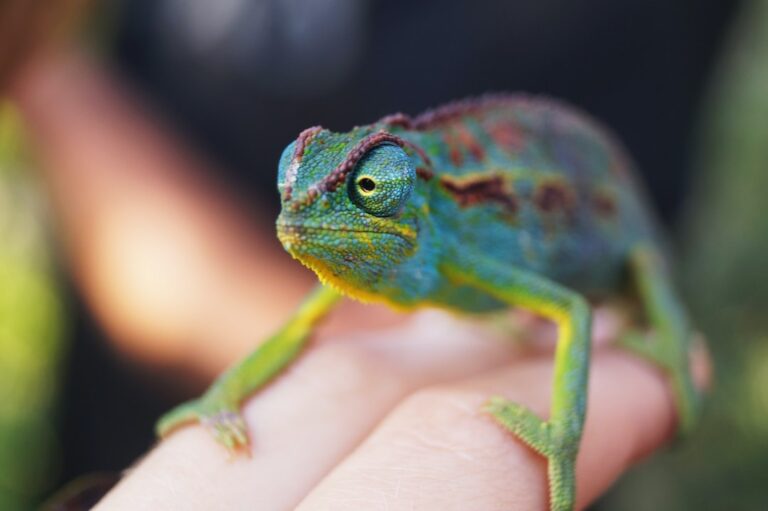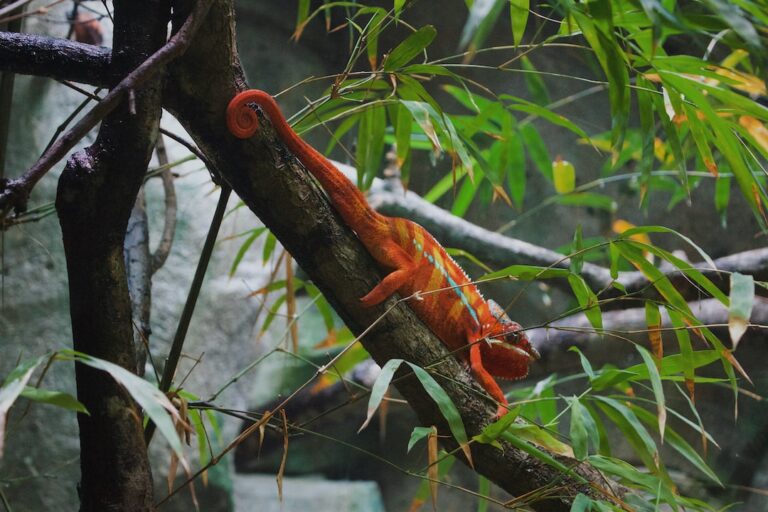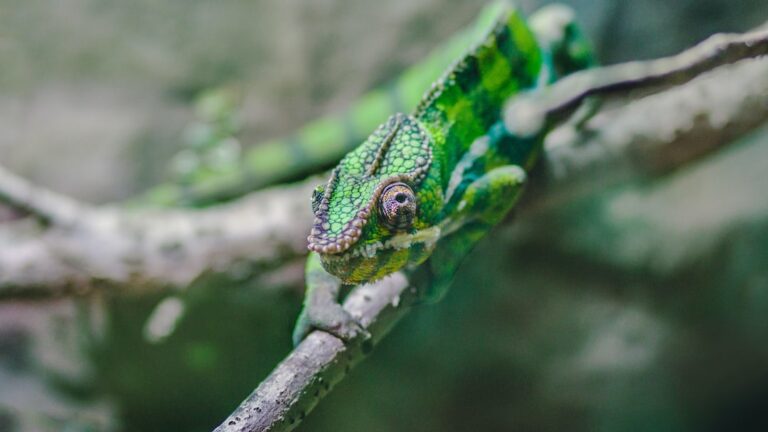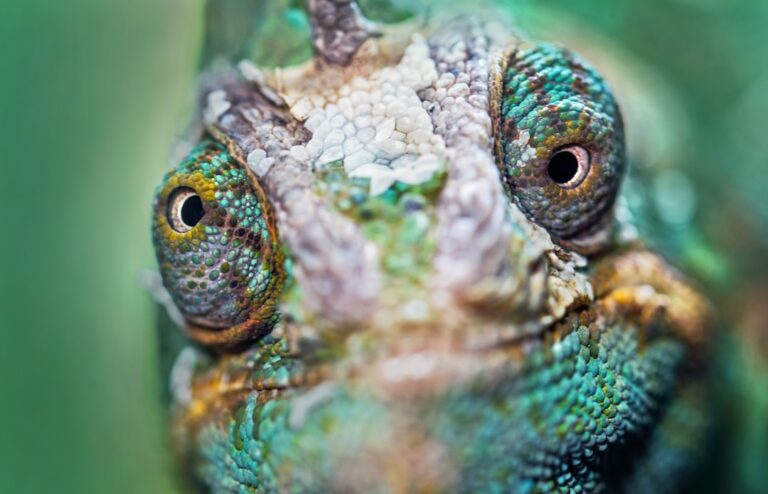Can Chameleons Kill Themselves?
Chameleons are fascinating creatures known for their unique ability to change color and blend into their surroundings. These reptiles are found in various parts of the world, including Africa, Madagascar, and parts of Asia and Europe. Chameleons have a distinctive appearance, with their bulging eyes, long tongues, and prehensile tails. They come in a range of colors and patterns, making them a popular choice for reptile enthusiasts.
Table of Contents
Understanding Chameleon Behavior and Self-Preservation Instincts
In the wild, chameleons are solitary creatures that spend most of their time in trees. They have excellent camouflage abilities, allowing them to blend into their environment and avoid predators. Chameleons are also known for their slow movements and deliberate actions, which help them stay hidden from potential threats.
Chameleons have a strong self-preservation instinct and employ various strategies to protect themselves. One of the most well-known defense mechanisms is their ability to change color. This adaptation allows them to blend into their surroundings and avoid detection by predators. Chameleons can also inflate their bodies to appear larger and more intimidating when threatened.
Can Chameleons Accidentally Harm Themselves?
While chameleons have evolved impressive self-preservation instincts, they can still accidentally harm themselves in certain situations. One common way chameleons can injure themselves is by falling from trees or branches. These reptiles are arboreal creatures, spending most of their time in trees, and accidents can happen when they misjudge a jump or lose their grip on a branch.
Another way chameleons can accidentally harm themselves is through improper shedding. Like other reptiles, chameleons shed their skin periodically as they grow. However, if the shedding process is not smooth or if the chameleon tries to remove stuck skin forcefully, it can lead to injuries such as cuts or abrasions.
The Dangers of Improper Handling and Care for Chameleons
Improper handling and care can also pose significant dangers to chameleons. These reptiles are delicate creatures that require specific conditions to thrive. One common mistake made by owners is improper enclosure setup. Chameleons need a spacious and well-ventilated enclosure with appropriate temperature and humidity levels. Failure to provide these conditions can lead to stress, illness, and even death.
Another danger is improper handling techniques. Chameleons are not like other pets that enjoy being handled or touched. They are easily stressed by human interaction and can become agitated or aggressive if mishandled. Rough handling can cause physical injuries, such as broken bones or internal damage.
Chameleon Health Issues That Can Lead to Self-Harm
Certain health issues can also contribute to chameleon self-harm. One common problem is metabolic bone disease (MBD), which occurs when a chameleon’s diet lacks essential nutrients like calcium and vitamin D3. MBD weakens the bones, making them more prone to fractures and injuries.
Respiratory infections are another health issue that can lead to self-harm. Chameleons with respiratory infections may have difficulty breathing, leading to stress and anxiety. This can cause them to engage in self-harming behaviors, such as scratching or biting themselves.
Chameleon Species That Are More Prone to Self-Injury
While all chameleon species can potentially harm themselves, some are more prone to self-injury than others. For example, veiled chameleons (Chamaeleo calyptratus) are known for their aggressive behavior and tendency to bite when stressed or threatened. This can result in injuries not only to themselves but also to their owners.
Panther chameleons (Furcifer pardalis) are another species that may be more prone to self-injury. They are known for their territorial nature and can become stressed if they feel their space is being invaded. This stress can lead to self-harming behaviors, such as rubbing their snouts against the enclosure walls or branches.
The Role of Stress and Anxiety in Chameleon Self-Harm
Stress and anxiety play a significant role in chameleon self-harm. These reptiles are highly sensitive to their environment and can easily become stressed by changes or disturbances. Stress can manifest in various ways, including loss of appetite, color changes, and aggressive behavior.
When chameleons experience prolonged stress or anxiety, they may engage in self-harming behaviors as a coping mechanism. This can include scratching themselves with their claws, biting their own tails or limbs, or rubbing their bodies against rough surfaces.
To reduce stress and anxiety in chameleons, it is essential to provide them with a calm and stable environment. This includes maintaining proper temperature and humidity levels, providing hiding spots, and minimizing human interaction.
Preventing Chameleon Self-Harm: Best Practices for Owners
Preventing chameleon self-harm requires owners to be knowledgeable about their pet’s needs and provide appropriate care. Here are some best practices for chameleon owners:
1. Proper enclosure setup: Ensure the enclosure is spacious, well-ventilated, and has appropriate temperature and humidity levels. Provide plenty of branches and foliage for climbing and hiding.
2. Handling with care: Minimize handling as much as possible and avoid rough or forceful handling. If handling is necessary, do so gently and support the chameleon’s body to prevent injuries.
3. Balanced diet: Feed your chameleon a varied diet consisting of gut-loaded insects, such as crickets and roaches, as well as leafy greens and fruits. Dust the insects with calcium and vitamin D3 supplements to prevent nutrient deficiencies.
4. Regular veterinary check-ups: Schedule regular check-ups with a reptile veterinarian to ensure your chameleon is in good health and to address any potential issues before they become serious.
Treating Chameleon Injuries and Accidents
If your chameleon does sustain an injury or accident, it is essential to provide appropriate treatment. For minor injuries, such as cuts or abrasions, clean the affected area with a mild antiseptic solution and apply a topical antibiotic ointment. Monitor the injury closely for signs of infection, such as redness, swelling, or discharge.
For more severe injuries, such as broken bones or deep wounds, it is best to seek veterinary care immediately. A reptile veterinarian will be able to assess the extent of the injury and provide appropriate treatment, which may include splinting a broken bone or suturing a wound.
Respecting and Protecting Chameleons in Captivity
Chameleons are unique and fascinating creatures that require specialized care and attention. As responsible owners, it is our duty to respect and protect these reptiles in captivity. By understanding their behavior, providing appropriate care, and minimizing stress and anxiety, we can help prevent self-harm in chameleons.
It is crucial for chameleon owners to prioritize their pet’s well-being and educate themselves on proper care techniques. By doing so, we can ensure that these incredible creatures thrive in captivity and continue to captivate us with their beauty and unique characteristics. Let us all commit to being responsible chameleon owners and advocates for their welfare.
If you’re fascinated by the unique behaviors of reptiles, you might be interested in an article titled “Why Do Chameleons Throw Up?” This informative piece explores the reasons behind this peculiar behavior exhibited by chameleons. From stress to illness, there are several factors that can cause chameleons to regurgitate their food. To learn more about this intriguing phenomenon, check out the article on Reptile Friend’s website.


